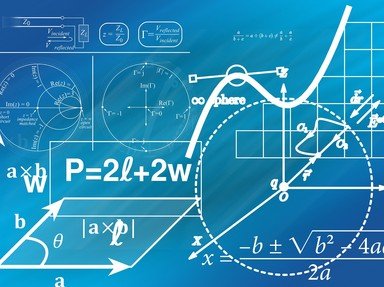Quiz Answer Key and Fun Facts
1. All congruent triangles are similar, but not all similar triangles are congruent.
2. In a triangle ABC, a line is drawn parallel to BC, which cuts AB at D and AC at E.
The ratio of AD:AB is equal to 3:5.
What is the ratio of DE:BC?
3. What is the sign which denotes similarity?
4. In a triangle XYZ, a line 'PQ' is drawn parallel to YZ, cutting XY at P and XZ at Q.
The ratio of XP:XY is 2:3. What is the ratio XQ:QZ?
5. If a line divides two sides of a triangle in proportion, then it is parallel to the third side.
6. The Midpoint Theorem states:
"A line joining the midpoints of any two sides of a triangle is parallel to the third side and equal to half the length of the third side."
So, riddle me this: What is the converse of the Midpoint Theorem?
7. Enough about sides. Let's talk areas.
You have been given two similar triangles, MNO and DEF. You have to find out the ratios of their areas.
Which of the following formulae can be used to find out the ratio of the areas of the given triangles.
8. All equilateral triangles are similar.
9. A given triangle ABC is isosceles. Angle B and angle C are the base angles.
From B, a perpendicular 'BD' is drawn to cut AC at point D. From C, a perpendicular 'CE' is drawn to cut AB at point E.
State which of the following pairs of triangles are similar.
10. ABC and PQR are two triangles. If the ratios of all the corresponding sides of the triangles are equal, then ABC ~ PQR.
Source: Author
Rossell
This quiz was reviewed by FunTrivia editor
crisw before going online.
Any errors found in FunTrivia content are routinely corrected through our feedback system.

